Are the environmentally-friendly farming methods at Mangarara Station the future of New Zealand agriculture?
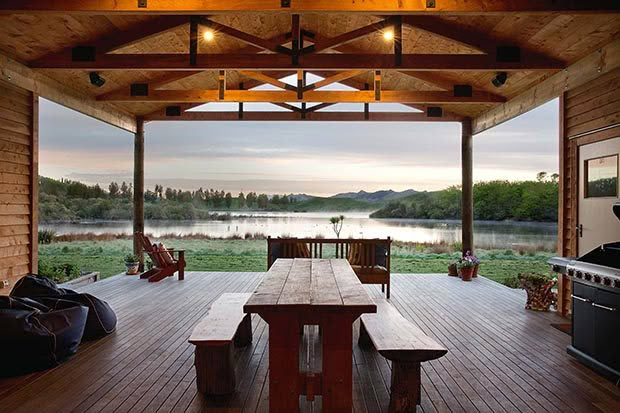
Greg and Rachel Hart share a mission: to connect New Zealanders with what they eat, how they live and with the planet itself.
Words: Ann Warnock Photos: Tessa Chrisp
It is a phone call Greg Hart won’t forget. December 2007 and the Mangarara Station farmer cold-called Air New Zealand to talk trees, planes, fuel, carbon credits and environmental welfare.
It was audacious rhetoric. Could there be potential for New Zealand’s national airline to offset its environmental impact by partnering with a 600-hectare holistically hued farm in Central Hawke’s Bay – a world away from Air New Zealand’s glass-fronted offices in Auckland?
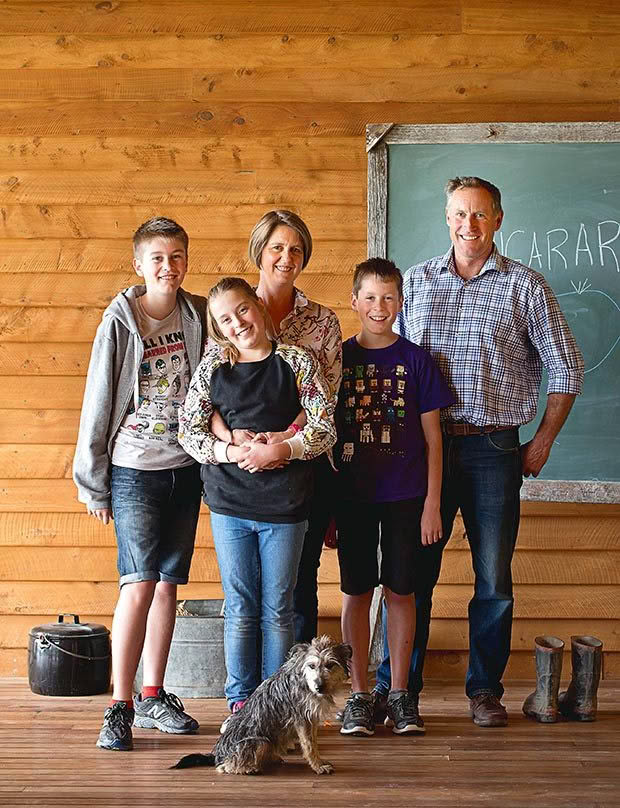
Rachel and Greg with their children George (left), Emma and Bill and Pipi the dog
Forty days later Greg and Rachel were in the city mixing it up with the big guns – the prime minister, Air New Zealand’s CEO and the airline’s management team. The unbelievable happened; Mangarara Station was announced as the first recipient of the Air New Zealand Environmental Trust, garnering a grant of $450,000 over three years to plant 85,000 native trees on the farm and cementing an astonishing bond between big-scale corporate player and small-scale man of the land.
For the past eight years the convergence has brought regular visits to Mangarara Station from Air New Zealand’s Greenteam – staff from all corners and careers including flight attendants, air traffic controllers, engineers, cargo handlers and corporate managers.
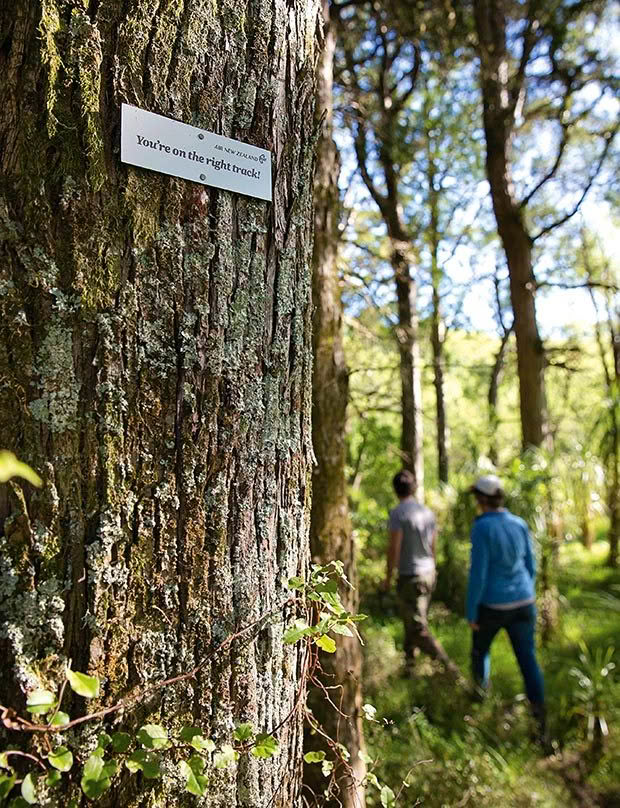
A 10-minute ride over the farm on a quad bike utility reveals an enchanted world.
They pitch in, tend the trees and enhance the landscape planted on the farm as part of the airline’s conservation estate. Relationships as well as trees have burgeoned.
“The Greenteam has become part of the Mangarara Station family. Many of the staff have re-visited the farm with their own families,” says Air New Zealand’s head of sustainability Lisa Daniell. One engineer has stayed five times.
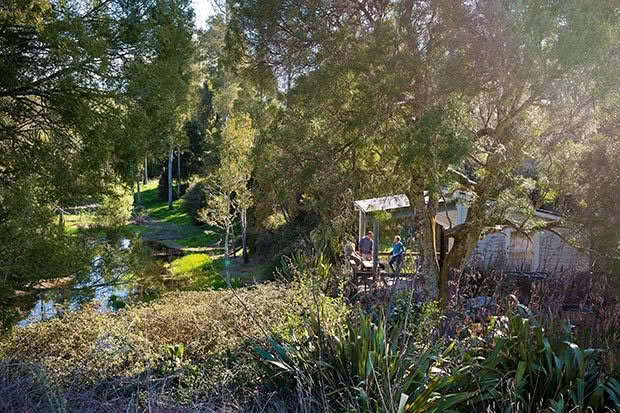
Set in 10 hectares of protected podocarp forest and wetland is an old hut that Greg and Rachel have repurposed as a magical setting for family picnics and summer sleepovers.
Greg and Rachel Hart are humbled. “The relationship has been transformative. It has showed us that anything is possible and it’s opened the gates,” says Greg.
It’s opened the gates literally – the Air New Zealand partnership includes an access agreement that permanently opens the farm up to the public. And opened the gates metaphorically – as Greg and Rachel administer their land with holistic grazing, tracts of trees, best practice animal husbandry and the three permaculture principles of earth care, people care and fair share.
“Every mouthful of food we eat has been produced in a system that either degrades or regenerates the planet. Agriculture is one of the world’s biggest problems but it has the potential to be the greatest solution,” says Greg.
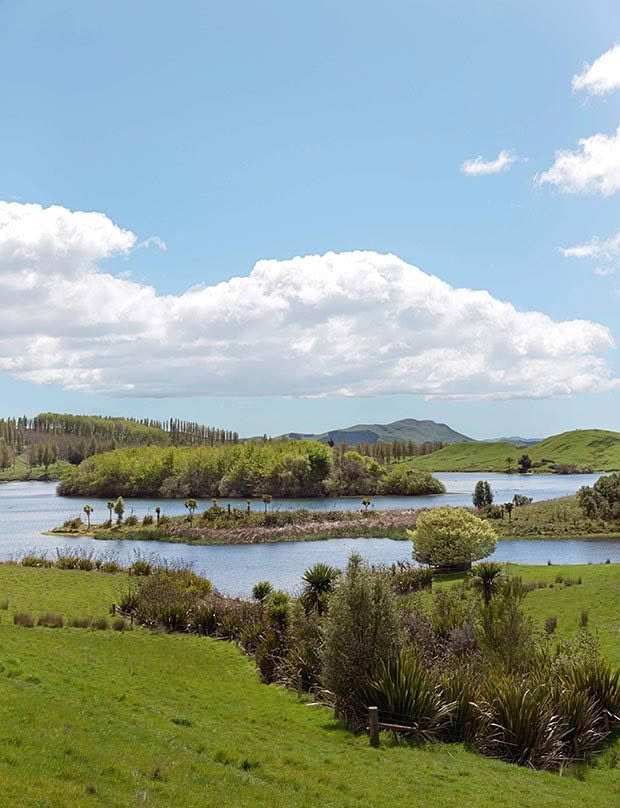
5000 natives were planted with woollen weed matting and biodegradable pins around the lake’s edge.
Pursuing that agricultural solution is the nub of the Hart family’s way of life. Twenty years ago Greg and Rachel, both of whom grew up on farms, resigned their respective jobs in Palmerston North – he as a grain marketing manager, she as business administrator.
They sold their house and bought 240 hectares of land made up of a 30-hectare lake, some flat terrain and steeper hill country 30 minutes’ drive south-east of Hastings between Waipawa and the coast.
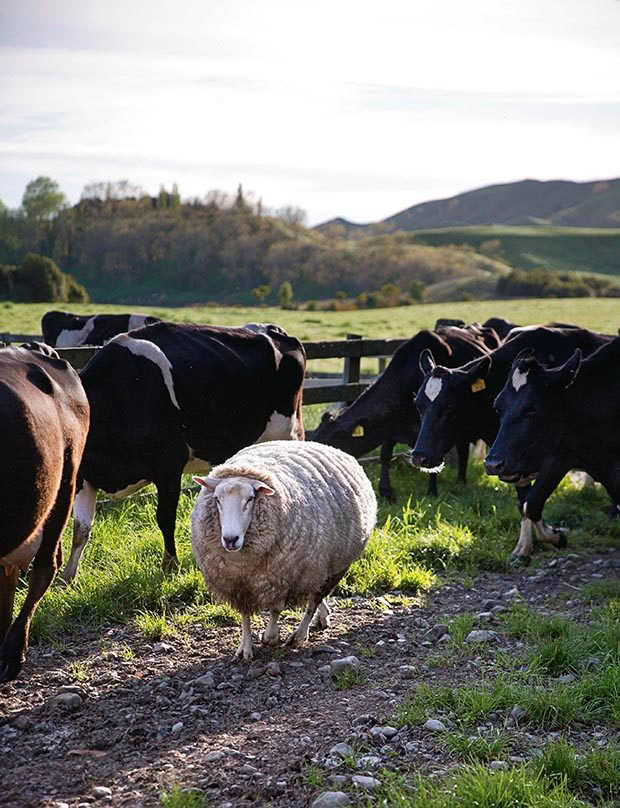
Greg the sheep – once a pet lamb – is convinced he’s a cow and attends the milking shed each day with his cohorts
It adjoined a larger block owned by Greg’s parents who until 1990 had farmed near Methven. Both properties – now merged into a single 610-hectare entity – were once part of the original holding of Mangarara Station established in the 1850s.
The land had always been farmed conventionally. Greg and Rachel put on their work boots and began to do the same. “Farming was all about loading with stock and fertilizer and maximizing production for financial return.”

Greg and Pipi the dog surveying the land.
But the couple had some big picture questions. Were they on the right path? Where was the planet heading? Greg read and reflected. He acquainted himself with the thinking of Joel Salatin, described by Time magazine as “the world’s most innovative farmer” whose own property in Virginia in the United States is an international icon of holistic management and healing of the land.
Greg’s interest was also piqued by Australian farmer Darren Doherty of the Regrarian movement (seeking to rekindle and reboot production landscape) and Zimbabwean biologist Allan Savory who believes grazing techniques can build soil carbon and microbial diversity.
“We looked at what we had and thought, ‘How much is enough?’ We want quality not quantity.”
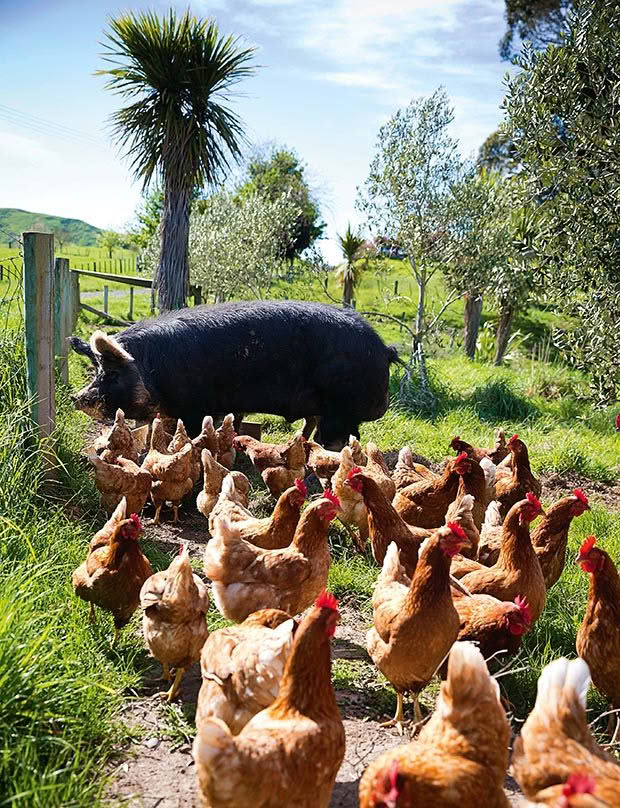
The big black boar named Lucky really is blessed growing up with the Hart family.
Then in 2000 Greg and Rachel’s lives changed when they lost their five-month-old son Dan who had been born prematurely. Rachel had been unwell with lupus at the time. In 2002 a kidney transplant restored her health.
“Our baby dying was a catalyst for the evolution of the farm,” says Greg. “It was tough but we came through. It’s been a learning experience. It made us stronger, braver and bolder.”
Several years later the safe and happy arrival of their children – George in 2003, and twins Bill and Emma in 2005 – brought into focus the couple’s desire to travel a new route. They committed to growing nutrient-rich food in a farming environment that regenerates its place on the planet.
“Sustainability isn’t enough. We want to restore the soil and water.”
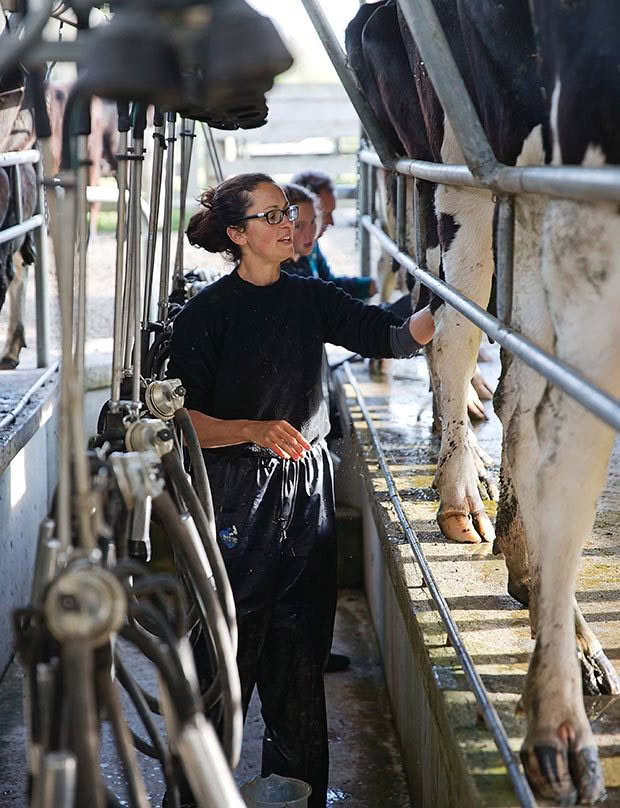
Farm helper Lisa milks the cows and afterwards feeds some of the milk to the calves.
In 2010 Greg spent a life-changing month in Scotland at the revered Findhorn Foundation, an international hub for holistic and sustainable learning. It sharpened the couple’s drive towards developing a farm framed by permaculture where separate but interconnected enterprises are stacked on the land.
“Four years ago we bought 22 cows from the bargain bin at the sale yards and built a herringbone shed with second-hand plant with help from our wonderful friends Shane and Nicky. We feed the milk to the families on the farm, the calves and the pigs. The cow poo in the shed goes to our worm farm which helps grow our vegetables and the cows offer a learning experience for farm visitors.”

A pig should be allowed to express its ‘pig-ness’, writes American farmer Joel Salatin.
For Greg and Rachel, sharing the resources and rhythms at Mangarara Station and offering the farm as a place where people can connect back to the land is number one. Sharing the farm on a daily basis is a young family who live in its converted stables and manage the dairy cows and milking, tend the vegetable gardens and keep bees. Then there’s a constant stream of young wwoof-ers.
Two years ago Greg and Rachel ramped up their ability to share their landscape. Equipped with that brave and bold spirit, they built a lakeside eco-lodge from two former classrooms trucked down from Hastings. It accommodates up to 17 people.
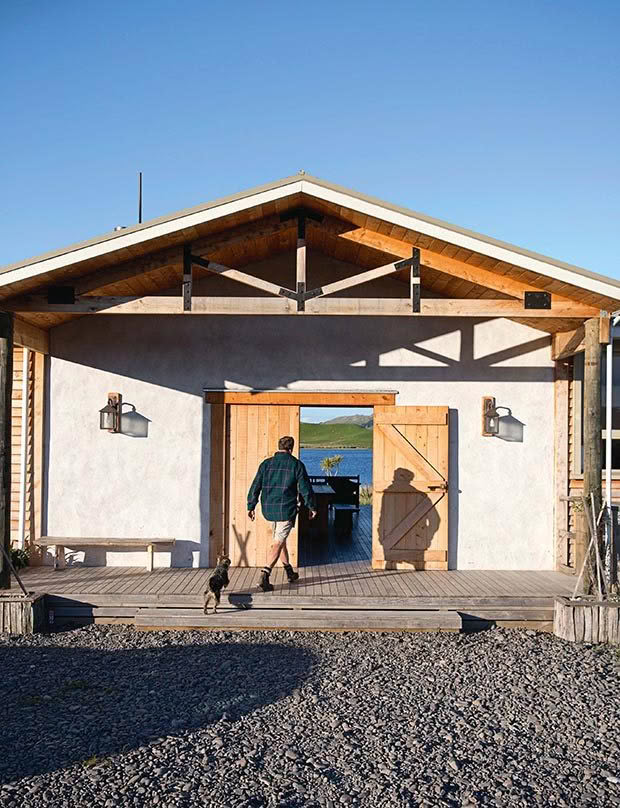
Entrance to the lodge verandah.
Launched in November 2015 the lodge has become a venue for family holidays, family reunions, corporate groups, educational groups and girls’ and boys’ weekends.
In quintessential Hart family style, caring as well as sharing is part of the enterprise. A charity programme run in conjunction with the booking system allows families in need to have free accommodation at the lodge.
Six months ago they launched The Family Farm Meat Box – a project that enables them to share the food they grow at Mangarara. “We’re on a mission to change the world one meal at a time.”
Comprising free-range, re-generatively farmed angus beef, texel lamb and berkshire pork, the meat is vacuum packed, frozen and delivered from door to door. As part of Greg and Rachel’s thrust for a collective, community approach, people can “friend the farm” and join its Family Farm Meat Club.
Greg says optimizing life is the ethos. “I think life, just like nature, tends to come storming back if you give it half a chance,” says Greg.
It has definitely “stormed back” to Mangarara Station. Four years ago when general manager of the James Cook Hotel Grand Chancellor Steve Martin cycled past the Mangarara Station gateway on a summer holiday, it sparked an extraordinary bond between farm and hotel.
“Steve saw our sign about the Air New Zealand Environmental Trust. His hotel is a benefactor. It’s led to amazing friendships. They just get what we are about and the hotel is doing some great eco-friendly things,” says Greg.
Its management team travels from Wellington to Mangarara Station annually and has now planted more than 300 trees.
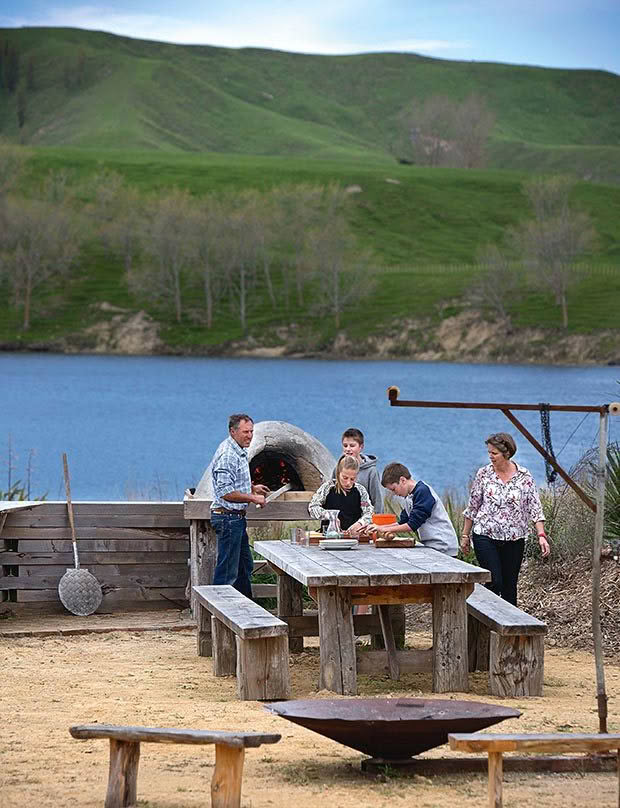
Greg and Rachel and the children love entertaining and spending time at the lodge.
But Steve says Mangarara Station has given the hotel so much more. “We’ve experienced first-hand life on a working farm as well as the environmental movement Greg and Rachel are committed to progressing.” The visits have inspired new concepts for minimizing the hotel’s impact on the environment, says Steve.
As dusk falls on the farm, environmental responsibility is set to one side as George, Bill and Emma roar around the lodge grounds then swarm to the dinner table. The Hart’s modest family home is a few minutes away up the gravel drive.
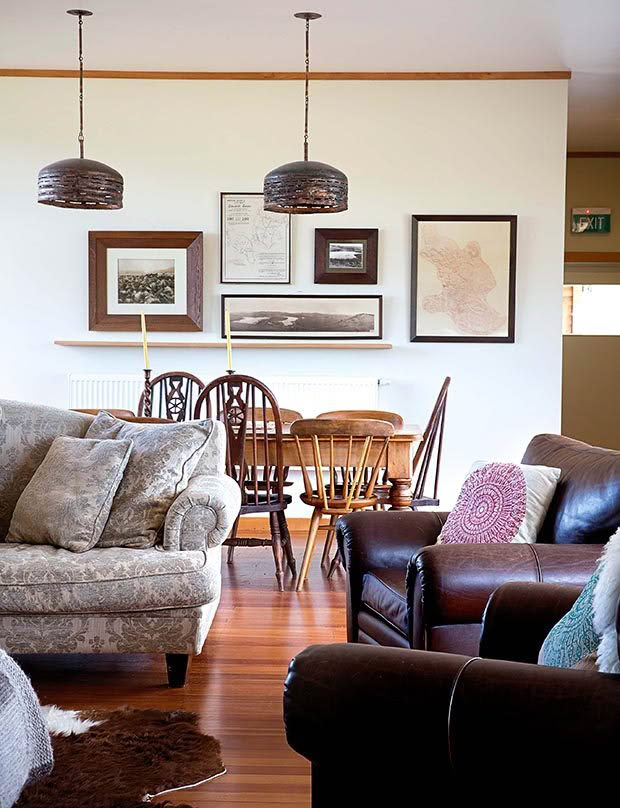
Recycled classroom cabinetry and pre-loved furniture has formed the basis for the lodge’s interior.
Greg and Rachel and the children love entertaining and spending time at the lodge where the visitors’ book brims with joy.
“You are the kindest… family I have ever met. Thank you from the bottom of my heart… it has changed my life, changed the way I look at food, work, my future,” says a recent entry.
Tom, a wwoof-er at Mangarara Station, who is normally a chef in Copenhagen, has helped prepare the evening meal. He hopes one day to return to his native Slovakia to imprint some of his Mangarara learnings on his own plot of land.
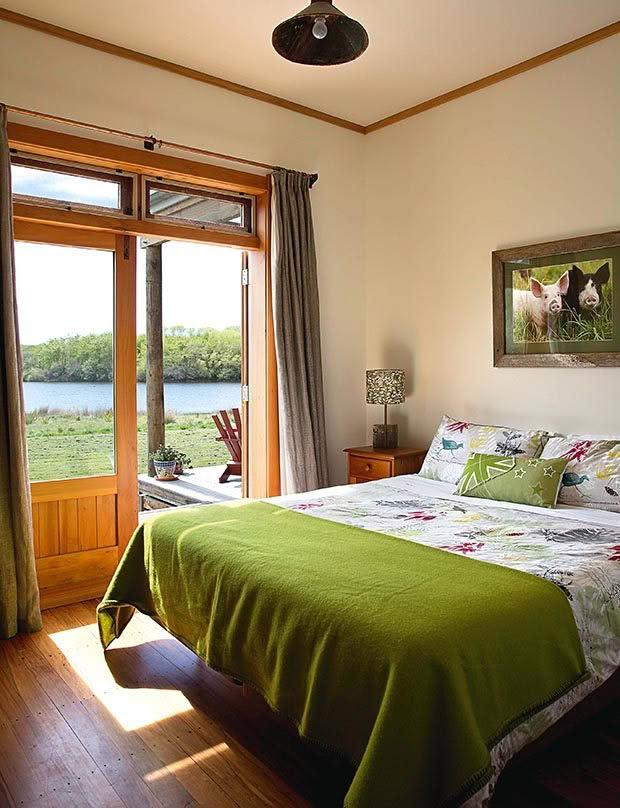
The lodge accommodation.
“We meet lots of people with cool accents and have made friends from loads of different countries.” (George)
“It’s good because people come here and they’ll maybe see a ewe having a lamb.” (Bill)
“People are always smiling when they feed the pigs.” (Emma)
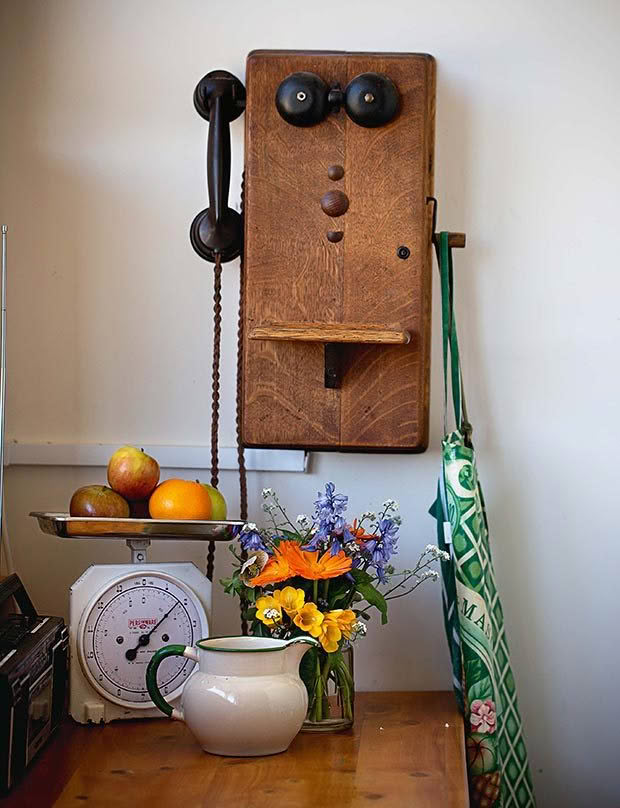
The old wooden phone came from Greg’s father’s family home in mid-Canterbury.
There are few evening meals when this inspiring family of five dines on its own. Rachel produces breakfast, lunch and dinner for at least seven at most sittings while deftly administering the growing business of Mangarara Station.
“It’s fantastic to see the farm coming to life with all the trees. When people come to help us, like the Air New Zealand team, they may never have had access to a farm before. They fall in love with the land. Being here opens your eyes to possibilities and the importance of being part of nature,” says Rachel.
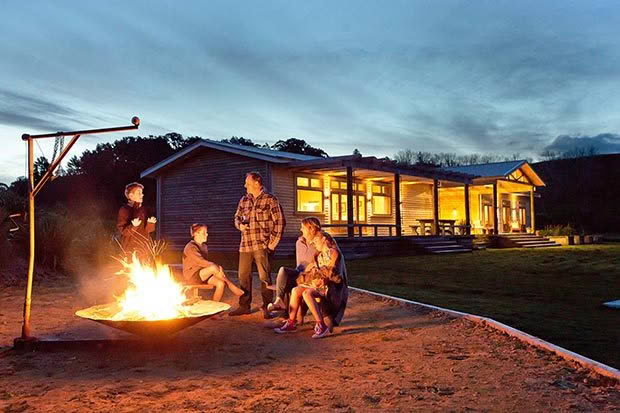
A recycled mower disc is an ideal vessel for an outdoor fire.
Greg says the motivational force is restoring paradise at Mangarara Station. “It sounds a bit ‘out there’ but the planet’s been taken for granted over the past couple of hundred years and could do with a bit of help getting back in balance.” And when he stands at the highest point on the farm he thinks it is all pretty cool but it could be so much more.
Given Greg and Rachel’s capacity to grow environmental goodness there will be “so much more” to come. But in the meantime a message from the world’s most innovative farmer says Mangarara Station is absolutely on track.
“As a leader and facilitator of land-healing principles, Greg Hart touches farmers, land and consumers in a powerfully positive way throughout New Zealand,” says Joel Salatin from Virginia.
MANGARARA STATION
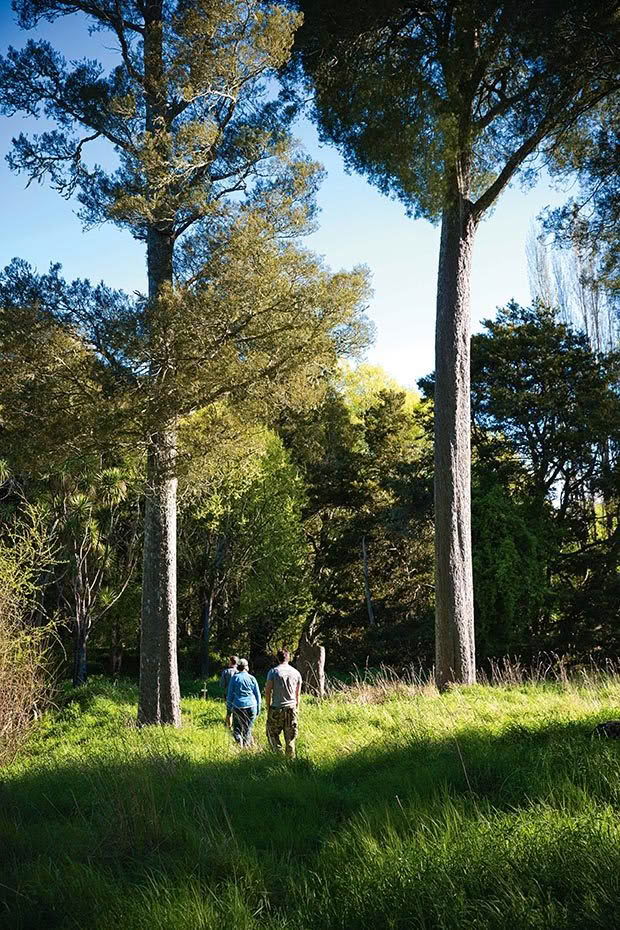
✱ Holistic grazing is the heartbeat of Mangarara. Grass is kept longer, with a longer rest period before the animals return to the paddock. Cattle trample the long grass, which has a higher carbon content. It soaks up the dung and urine so it doesn’t contaminate waterways and instead becomes compost, enriching the soil and insect life. Longer grass (like a solar panel) with longer roots (like a battery bank).
✱ The farm is not organic but strives to be without chemicals and to balance nature
and agriculture.
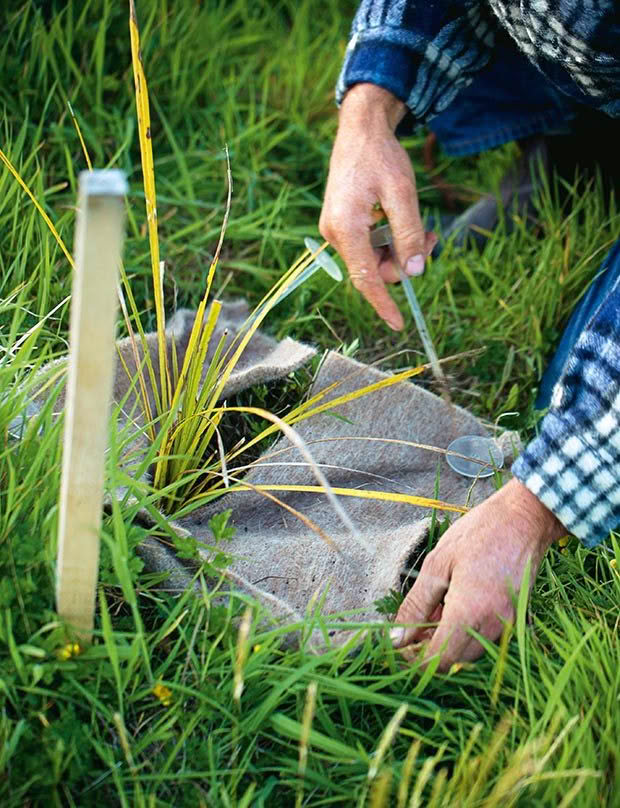
Grass is kept longer, with a longer rest period before the animals return to the paddock.
✱ Animal health is imperative. “We treat our animals like our children with the best life and best food. If animal remedies for stock health are required we use them.”
✱ The farm is protected by two QEII covenants.
✱ Some 105,000 trees have been planted in the past eight years.
✱ 22 cows for milking, 76 calves for rearing, 60 berkshire pigs, 150 chickens, 900 breeding ewes, 1000 lambs (to supply the Family Farm Meat Box), 150 dairy heifers, 50 beef cattle, 150 raising and finishing contract wagyu steers and 70 wagyu cows.
✱ Growing abundance of tui, korimako, pipiwharauroa, kereru, frogs, spider webs, insects and bees. mangarara.co.nz
WHO IS JOEL SALATINI?
✱ Highly influential 60-year-old American farmer, a proponent of humane livestock management where animals live according to their “ness” (e.g, a pig should be allowed to express its “pigness”), the earth is used for symbiosis, happiness and health is paramount.
✱ Self-described “Christian, libertarian, environmentalist and capitalist lunatic famer”.
✱ Lives at Polyface Farm in Virginia. Won’t sell his own produce outside a four-hour drive of his gate. polyfacefarms.com
✱ The New York Times calls him “the high priest of the pasture”.
✱ Author of nine books.
✱ Spends 100 days year speaking around the world.
✱ Has visited Mangarara Station on one of three trips to Aotearoa.
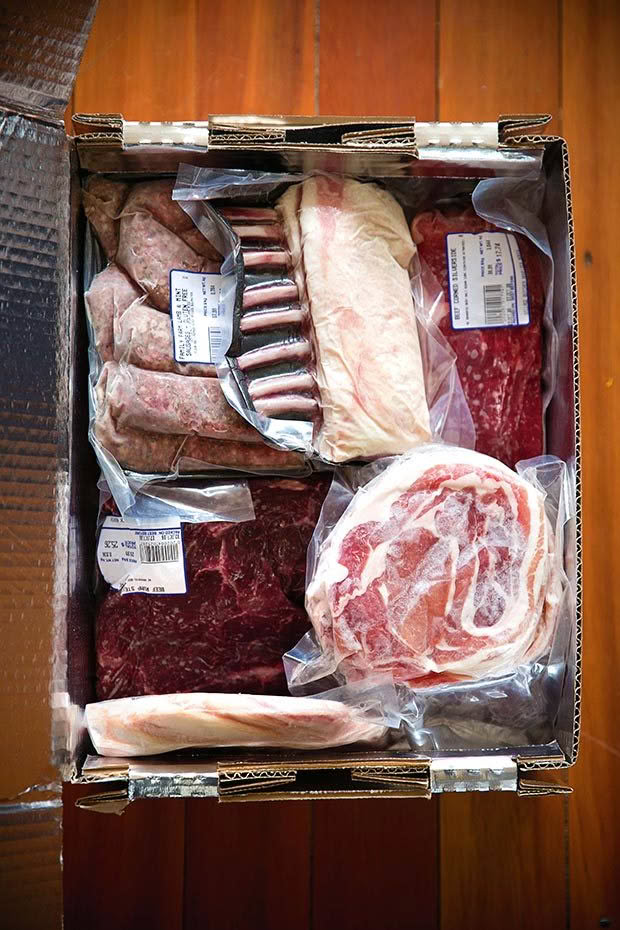
Family Farm meat box
Love this story? Subscribe now!
READ MORE ON POLYFACE FARMING AT MANGARARA STATION
 This article first appeared in NZ Life & Leisure Magazine.
This article first appeared in NZ Life & Leisure Magazine.
